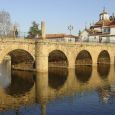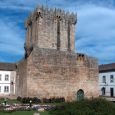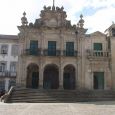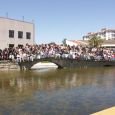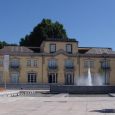Chaves
Advertisement
By Air
Airports nearest to Chaves are sorted by the distance to the airport from the city centre.
Chaves Airport (distanced approximately 1.9 km)
Mirandela Airport (distanced approximately 36 km)
Alijo Airport (distanced approximately 44 km)
Vila Real Airport (distanced approximately 55 km)
Ourilandia Airport (distanced approximately 58 km)
By Train
Between 1921 and 1990 Chaves was the northern terminus station of the Corgo line, a narrow gauge railway line which linked Chaves with Vila Real and Regua (the junction station for main line trains to Porto).The section between Chaves and Vila Real closed in 1990 and the remainder of the line closed in 2009.
By Road
It is serviced by A24 motorway which links Chaves with the south, to Viseu, Coimbra and Figueira da Foz connecting to Vila Pouca de Aguiar by the A7 (which acts as the gateway to the southern Tras-os-Montes) and the N103 from Braganca to Braga.Chaves is located 415 kilometres from Lisbon, 105 kilometres from Porto and just 55 kilometres from the district capital, Vila Real.
Advertisement
Church of Santa Maria Maior
Church of Santa Maria Maior or the Matriz Church is historical cathedral (long since decommissioned when the bishopric was transferred to Vila Real); in 716, during the Moorish invasion, there was no longer a bishopric in Chaves.Its construction dates to the year 1100, the church is a Romanesque design consisting of a main nave and bell tower.During 16th century, renovations were completed in the Renaissance-style, which completely modified the church (it was restored in 1968).Today, it conserves its Romanesque-style solid granite blocks and austere facade, broken only by the side door of elegant proportions (with busts of Saint Peter and Saint Paul), while a statue of Santa Maria Maior is located on a wall to the rear of the temple.The interior, consists of three naves separated by four cylindrical columns, with eight arches; a stone-ribbed dome covering the main chapel, austere walls, stained glass and an unpainted oak ceiling supporting the roof.
Church of Madalena
located on the left bank of the Tamega River, the Church of Sao Joao de Deus dates from the 18th century, built during the reign of King John VI, who maintained it (his coat-of-arms appears on the main door), it was originally constructed as a chapel for the military hospital (located next to the temple).The church includes neoclassic and baroque elements, including a very high facade making it difficult to view from the narrow street.
Roman bridge
the Roman era bridge, emblematic of the city of Chaves was constructed during the reign of Emperor Trajan to span the Tamega River in order to connect the Roman provincial settlements of Astorga (in Spanish Leon) and Bracara Augusta (now Braga) in Gallaecia.The structure still has Roman inscriptions on the principal columns, that identify the bridge and its dedication to Emperor Caesar Vespasianus Augustus.
Castle of Chaves
National monument since 22 March 1938, King Denis built the Chaves Castle in the 14th century, but today only the iconic Torre de Menagem (prison block) remains.The history of this castle is fused with the history of Chaves, a defensive structure during the Christian Reconquista.In 1383 King John I donated the town and the castle to the Condestavel Nuno Alvares Pereira, who helped defeat the faction opposed to the new king and who were occupying the castle.This knight included the castle in the dowry of his daughter Beatriz when she married Afonso, Count of Barcelos, King John’s illegitimate son, who would later became the first Duke of Braganza (1371–1456).
Fort of Sao Francisco
during the Middle Ages Chaves was defenseless from its unprotected border with Galicia.There was a realization that the nearby hilltops required garrisons to defend the region and prevent an occupation from Leon.Early plans suggested the construction of a hill fort in Pedisqueira, where a Franciscan convent already existed.But it was only at the end of the Portuguese Restoration War (1640–1668), that a fort was finally built.During the Napoleonic invasions (in 1807) the fort was captured by Marshall Soult, but retaken when a light garrison was left to guard it.It later became a centre for several pro-royalist revolts in the early 18th century, and later in 1910, after the establishment of the First Republic.In a reasonable state of preservation, the fort was acquired by a hotel group and four star hotel was adapted to the old building.
Fort of Sao Neutel
This fort was built to protect the northern hill against a possible invasion from Spain during the Portuguese Restoration War in the 17th century.It wasn’t connected to the defense system of Chaves so its builders had to provide it with a second external wall and an internal moat based on the Vauban system.It follows the irregularities of the terrain and it also has a quadrangular design, having on the corners towers that extend out over the moat.Because of the moat the access to the interior was made across a solid stone bridge.The walls are a meter and a half thick and 7 to 10 meters high, made of granite, while inside a chapel was dedicated to Our Lady of the Springs (Portuguese: Nossa Senhora das Fontes), where there is an annual pilgrimage.There are also small buildings that were constructed to house a military garrison and a garrison is still located in the vicinity of the Fort.
January - May
July - September
January - May -> 10(°C) - Winter
Advertisement

